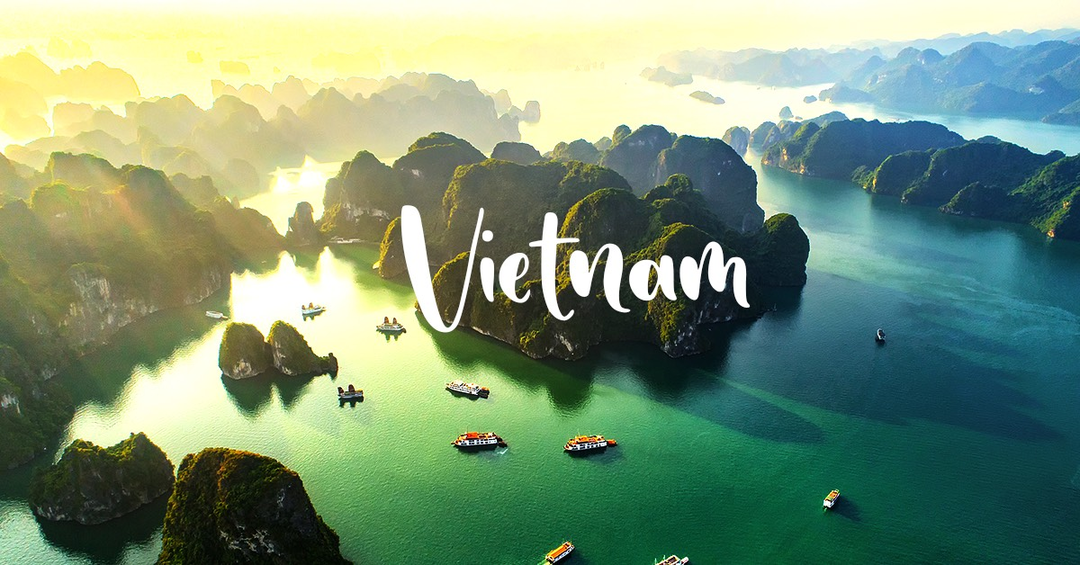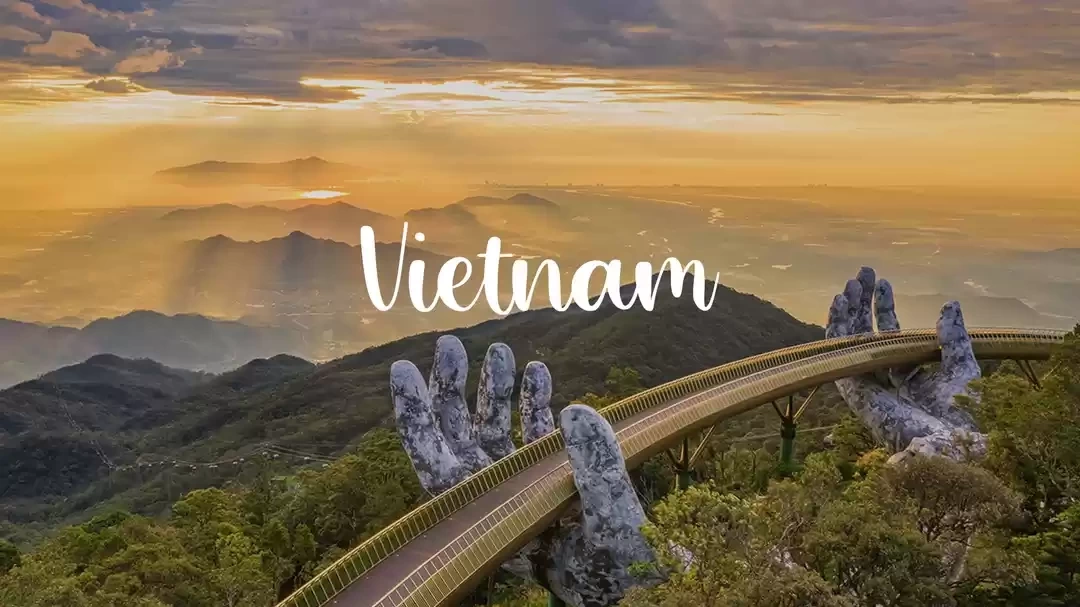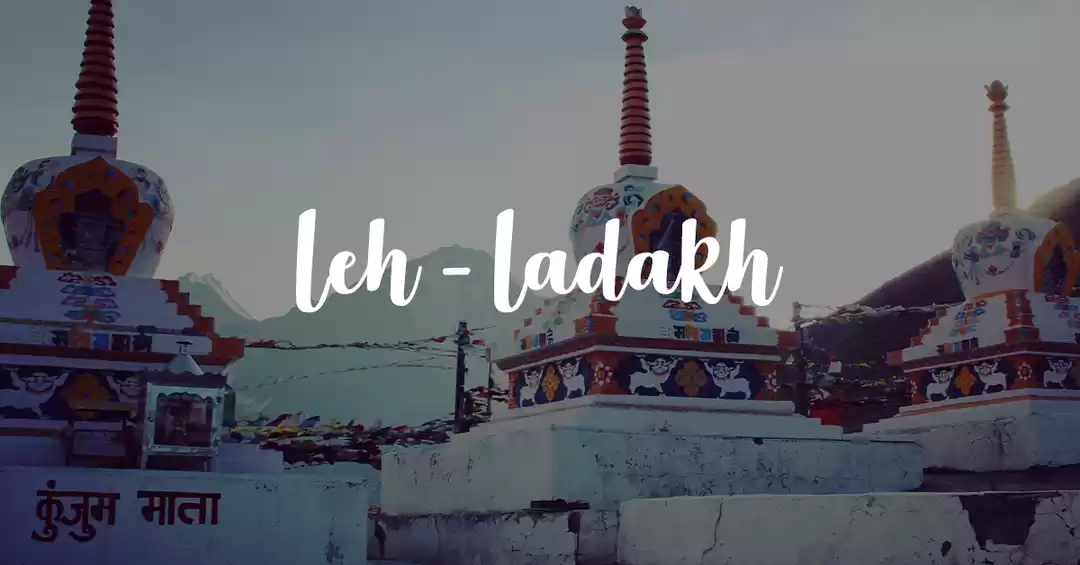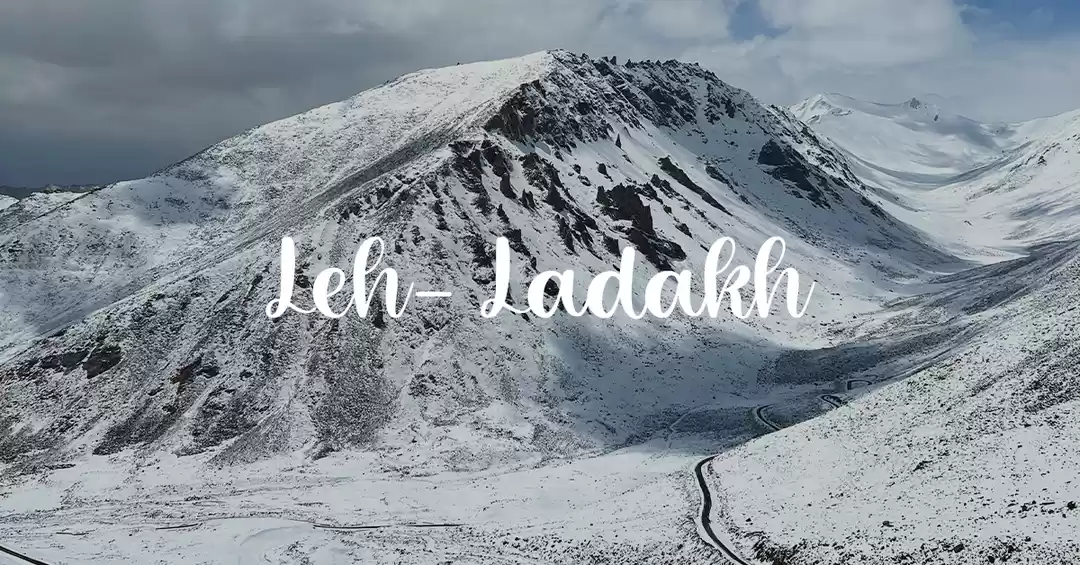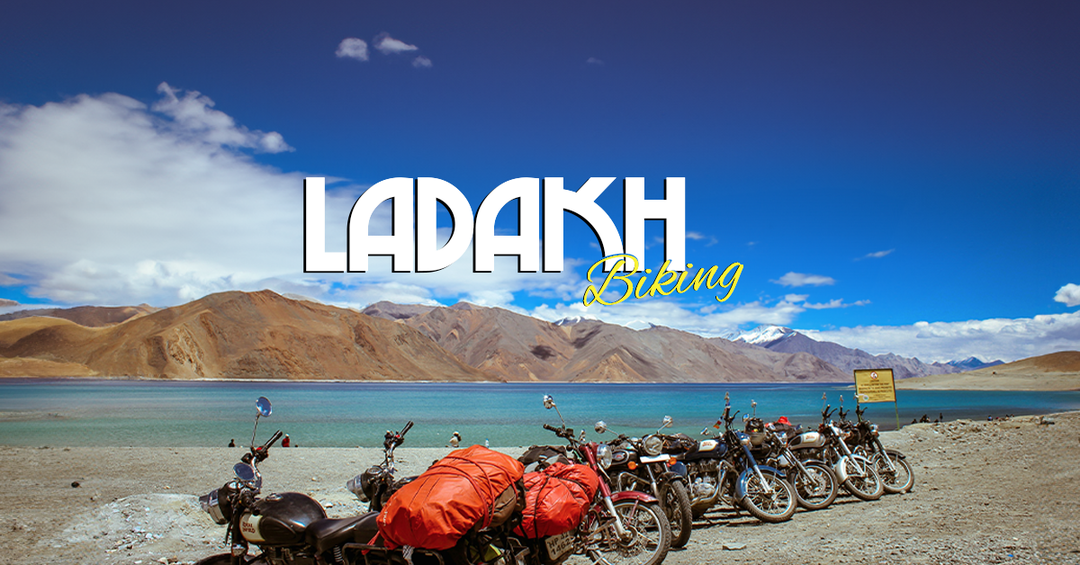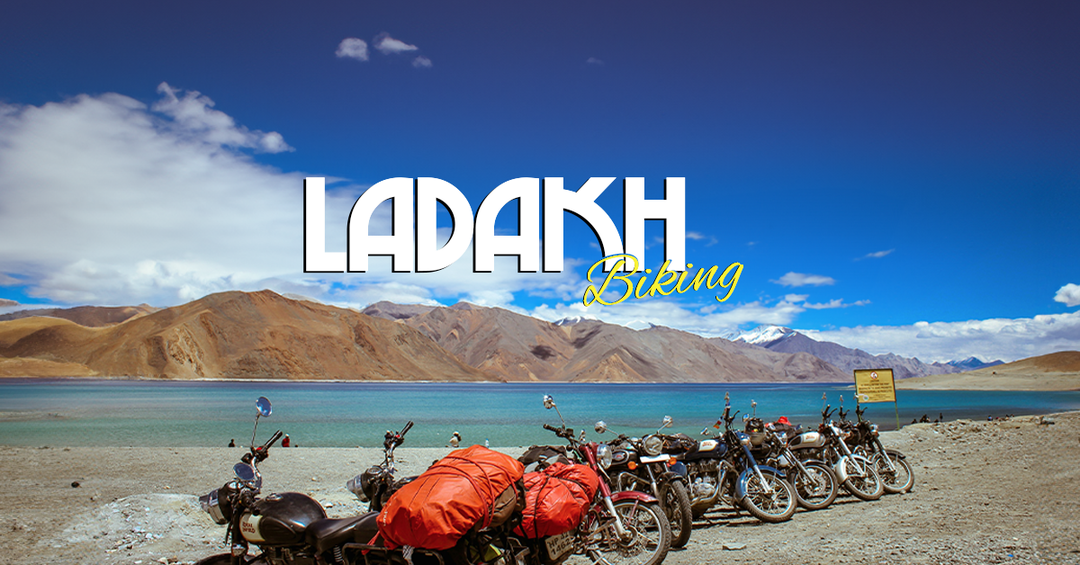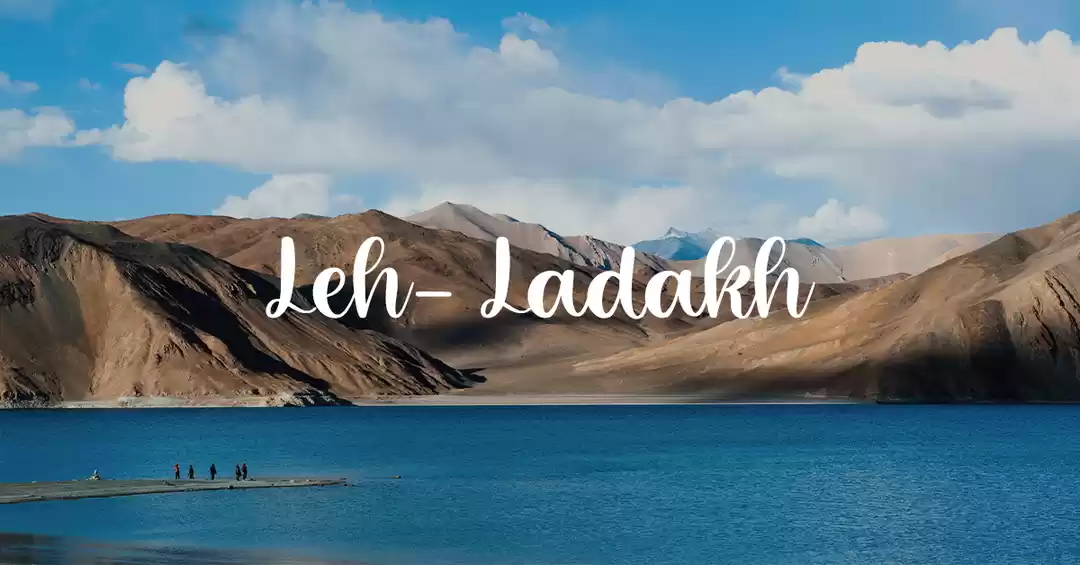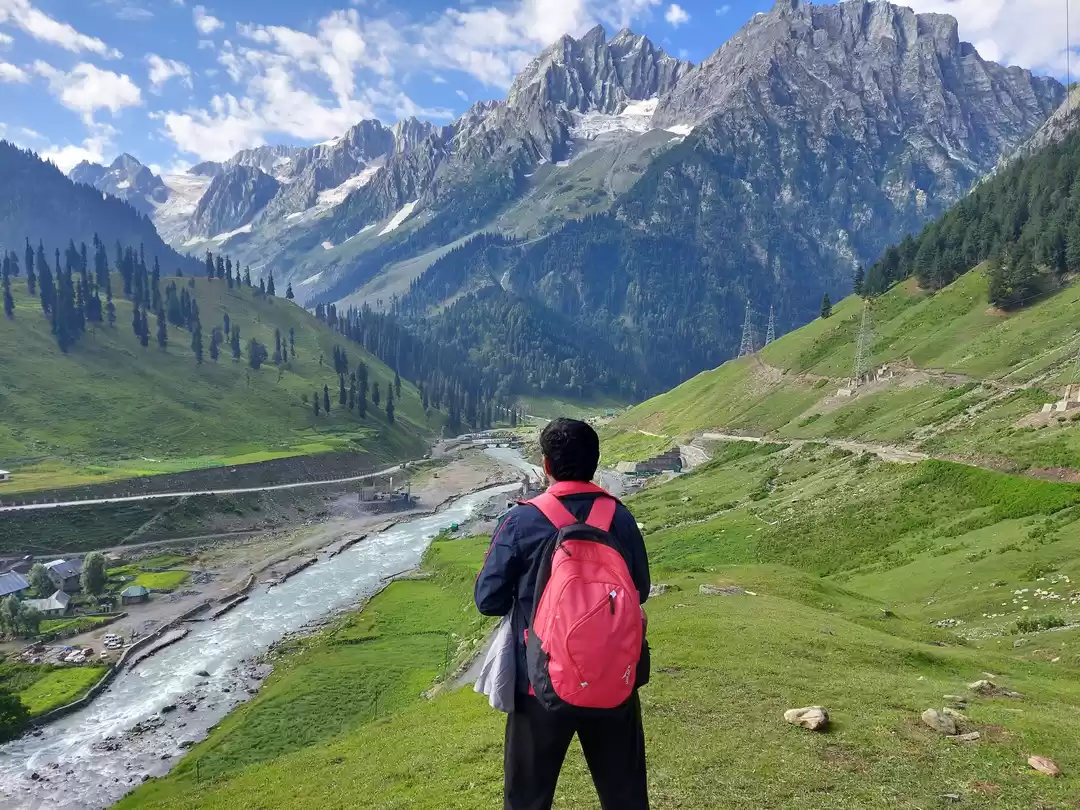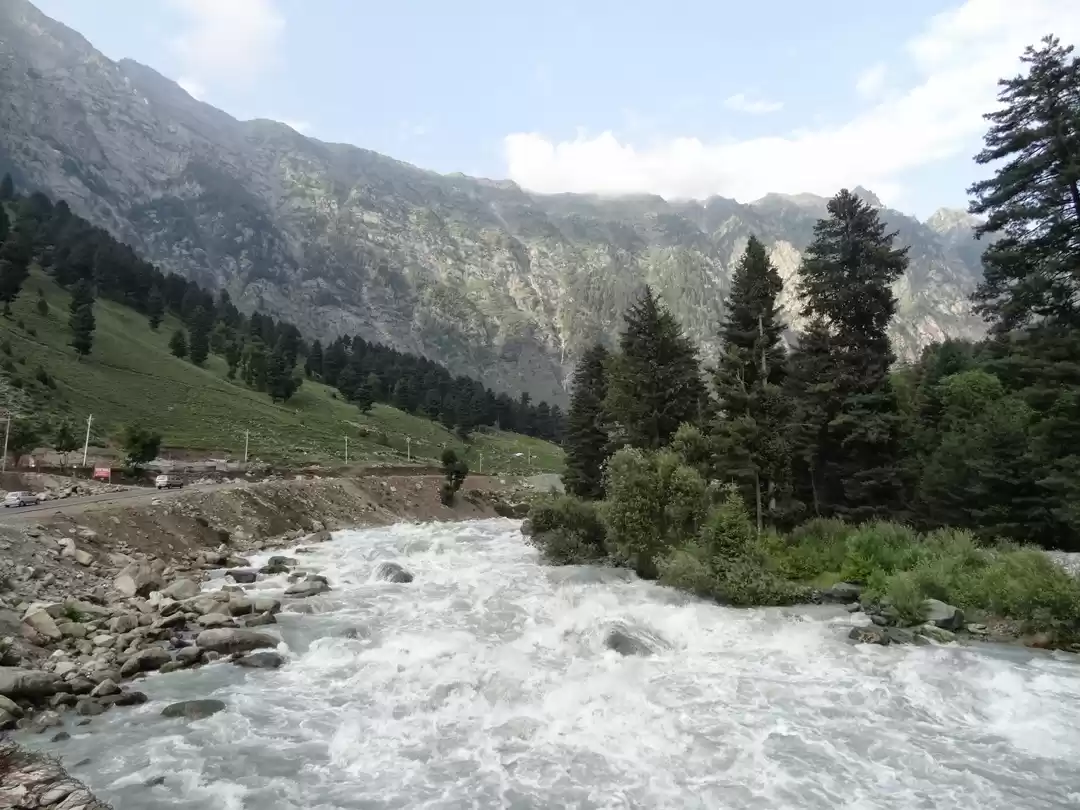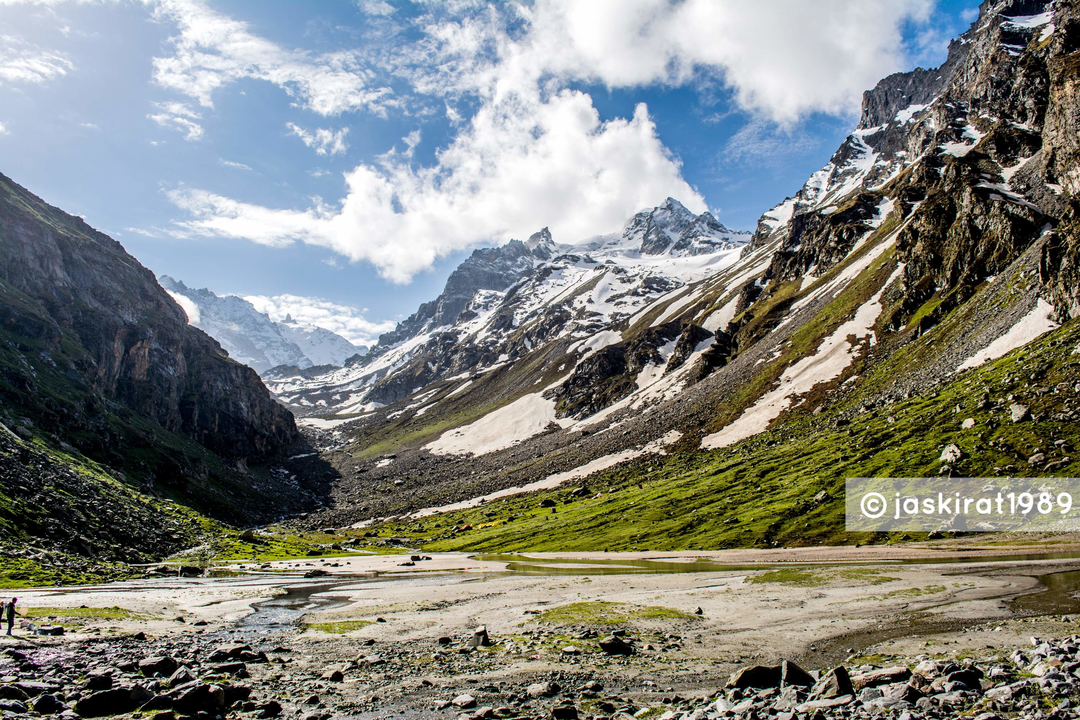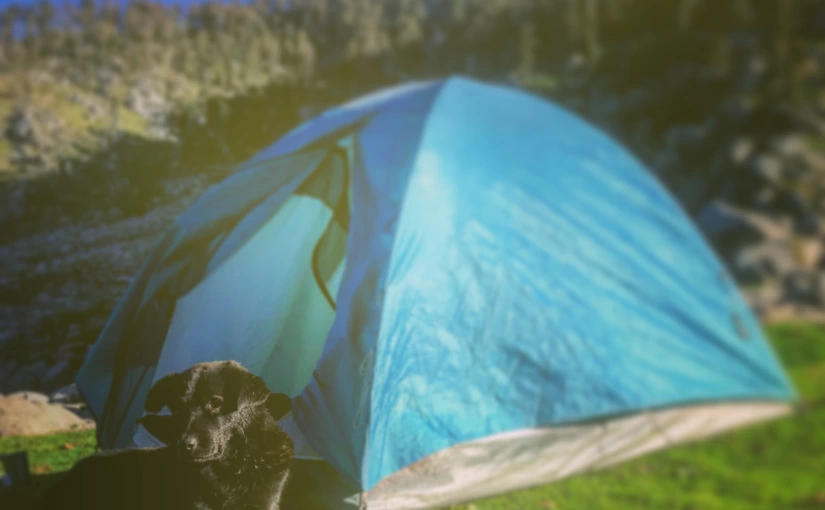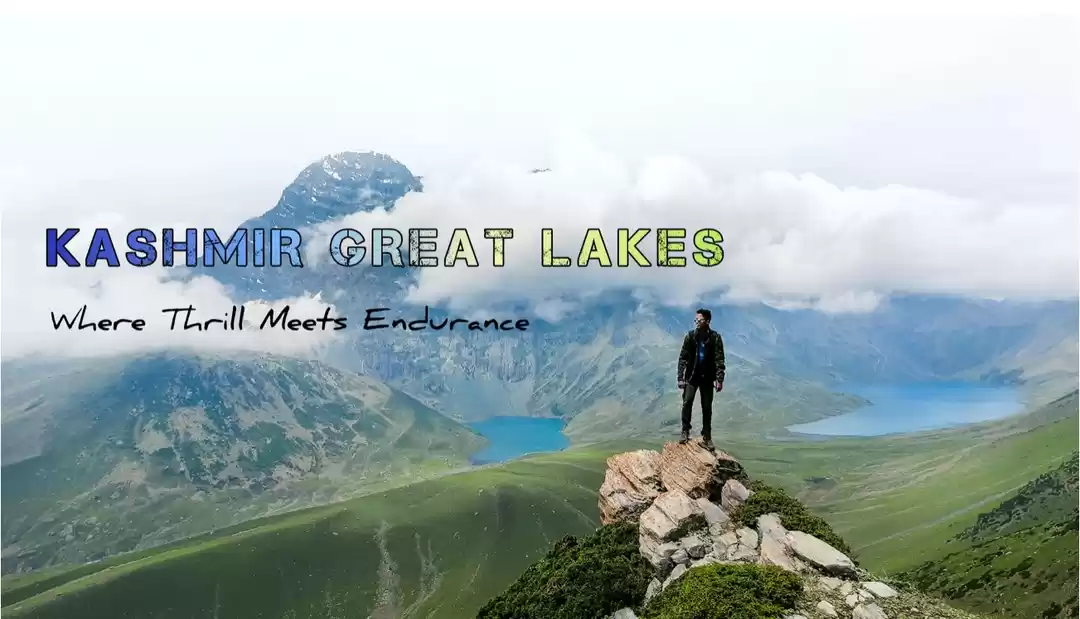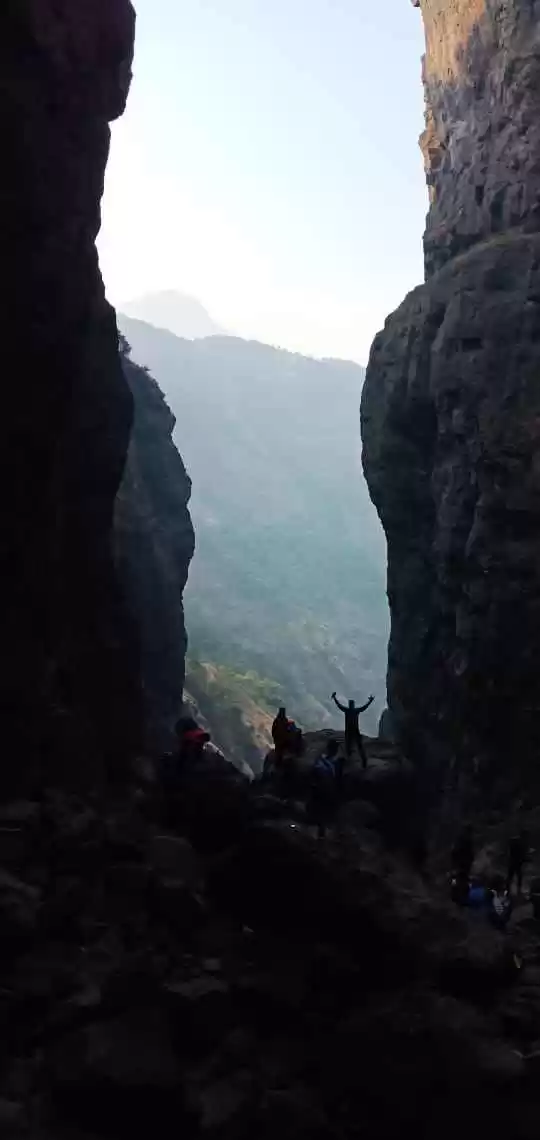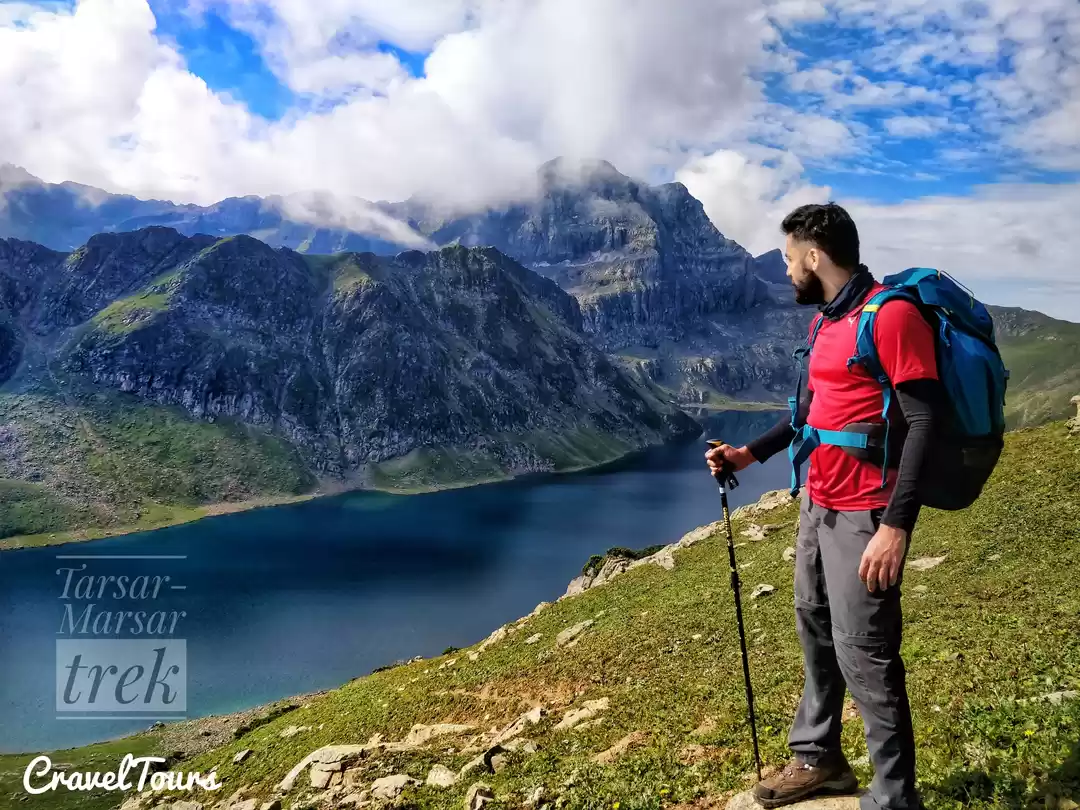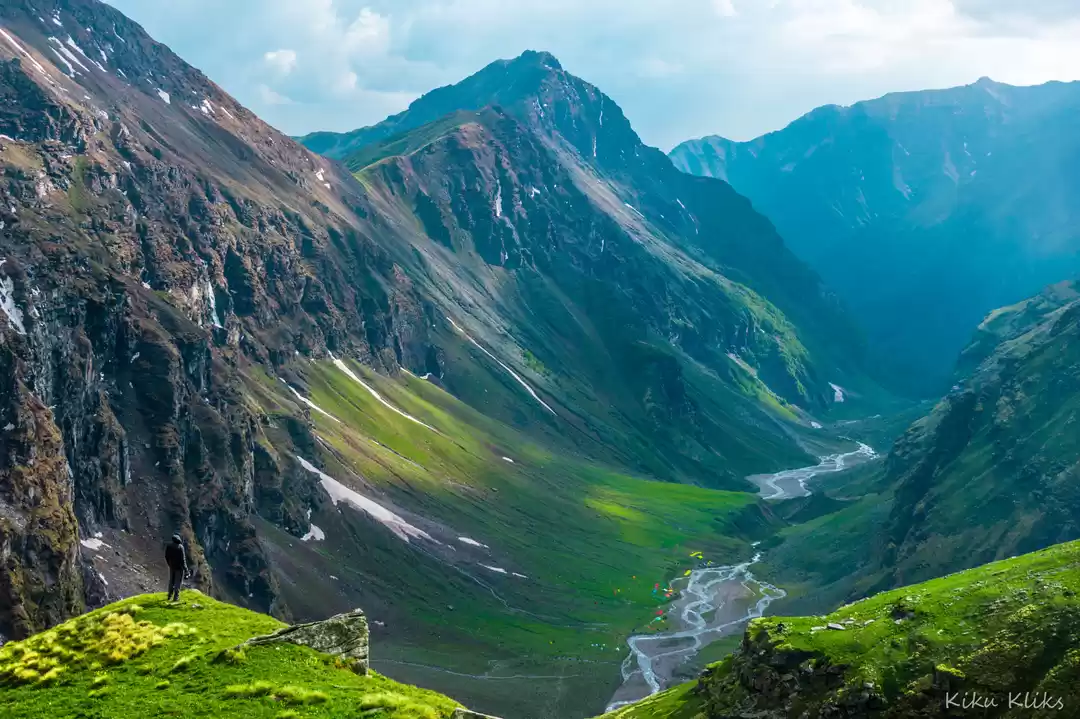
This has been long overdue. So one fine day in the August of 2016, while stuck in the infamous Bangalore traffic and trying hard to remain sane by swiping through my smartphone screen, I had this epiphany. This wasn't the first time I had the feeling that I was literally wasting my youthful years not doing the things that seemed so much fun and exciting. I'd have the same feeling every time my gang back home would come back from their many Sandakphu treks and upload the photos on Facebook. I knew I was missing out on life. So almost impulsively, I embarked on my very first solo trip. Treks, actually. That too right in the Himalayas. I'd only done a few of those small night treks around Bangalore. Some of them, like Kabbala Durga, did involve a fair amount of steep climbs and the works. But I knew this'd be a whole different ball game. Unsure of how unwise it was to take up my very first Himalayan treks alone, I decided not to let all the overthinking get the better of me.
So I did the "Valley of Flowers" trek in Uttaranchal first, followed by the Hampta pass trek in Himachal Pradesh. Upon the completion of the first trek, I came back to Haridwar and spent the night there. That story is for another post, perhaps. So the next evening, was my overnight bus journey to Manali. At this point, my childish enthusiasm had given way to much trepidation, as the experience of the valley of flowers had been more than sobering, needless to say. So I braced for a tough week ahead of me.
Manali did strike me as an amazing hill town with a vibrant town center. With its myriad German bakeries and the mighty Beas river flowing right beside, one is sure not to mind one's stay at this place.
So after having spent a night in Manali, I set out for Naggar early in the morning. The local buses are available throughout the day from Manali bus stand, but they get quite crowded and sitting with all the gears was a little taxing. It was a short, memorable journey through picturesque villages lining the Delhi-Manali highway. By this time, I couldn't have failed to notice how ubiquitous roses were in this part of India. Almost all the village homes had roses and so many other brightly-coloured flowers welcoming the guests at the porch.
After getting down from the bus, I had to hire a cab to get to the base camp, a village nestled high above the highway named Rumsu. The ride was bumpy, to put it mildly. But I'd already begun to get a sense of what kind of sceneries awaited me up there. The road trail winds through mostly uninhabited parts covered in dense vegetation, the tall pines standing out amongst them most notably. As we drove up, the trees would make way in places for me to catch glimpses of the rain clouds passing by the lush green mountains. A short walk from the place where the cab dropped me and I was there, a beautiful two-storey wooden building, the likes of which I'd never stayed in before. The rooms were warm, although the wooden floor seemed a little damp owing to the prevailing weather conditions. The house was surrounded by the quintessential Himachal apple farms. I'm not sure of the harvesting season, but most of the trees had the fruit hanging down from the branches.
A little bit about the trek now. I found out on the internet that Hampta Pass can be trekked through a wide part of the year, more accurately from May till October. It is located near the barren Lahaul valley and this part of the Himachal is flanked to the South-East by the rain-shadow region of Garhwal, meaning it remains relatively dry even at the height of monsoon. It is also usually listed as an easy (to moderate!) trek, not too much for beginners. Bear in mind that I was coming back fresh from the relatively difficult "Valley of Flowers" trek in Uttarakhand. So I'd be forgiven for taking heart from the fact that this was perhaps going to be a tad easier than the last one. But as was later revealed, it's not always like in the books.
After having lunch, we went out on a short trek to a nearby hill to get ourselves acclimatized to the prevailing conditions. It was raining all the time ever since we'd arrived that noon. It wasn't heavy, but more of incessant drizzling. We encountered the by now familiar vista of small patches of rain clouds lining up across the surrounding mountains and aimlessly fleeting about. The valley down below looked breathtaking, freshly drenched in the best shade of green. Water was streaming down the hill on numerous sections of the trail we took. Our path ended higher up, where we saw water gushing down through the hills up above, in the formation of a mini waterfall. The place was surrounded by forests of tall trees. After soaking in the atmosphere for a while, we started heading back to our home-stay. We got stuck for quite a while due to the rains, sheltering inside a straw hut used for the livestock. Waiting in that pile of wet fodder while the howling wind and rain kept lashing on the roof was another experience. It wasn't long before we all finished our dinner and crept inside the sleeping bags. We needed a cozy night's sleep, for tomorrow begins the adventure.
We started quite early from the village. We took a jeep to the Hampta dam, from where the trek begins. It was a short drive to the starting point. And thus it began, the Hampta pass trek. The initial part of the trail was thick alpine forest, with easily recognizable trees such as Pines, Oaks and Deodars. Huge boulders abound this part of the trail and quickly it became quite challenging navigating one's way through the landscape. On top of that, the floor was muddy owing to the rainfall. We crossed quite a few narrow streams trickling along the forest floor. After almost an hour's trekking, the tree-line suddenly appeared to be over and we'd arrived at an open pass, tall mountain ranges towering on all sides. On our left, the mountain gradually sloped down into the bed of this river cutting through the landscape, the current rather strong. We kept moving ahead along the ledge of the river. On the other side of the river down below, we could see white ponies grazing on the lush plains. Our guide told us that most of these ponies are not quite true ponies, but rather hybrids between horses and ponies. They looked too big for ponies anyway.
A little ahead at the bend of the trail, there was this tent in the middle of nowhere where an old couple were selling tea and Maggi. We stopped over for snacks there. The tea was amazing. And to think that you've come so far away from civilization, you can't help but be amused by the surreal nature of these encounters. So once done, we moved on along straight. Soon enough began a gradual descent and we arrived at this wooden bridge to cross the river. While definitely not a rickety structure, it didn't inspire much confidence either. This would be the first of the numerous times we'd be crossing gushing mountain streams over the next few days. Up ahead on the other side of the river was this landscape full of large boulders strewn across the field, mostly devoid of grasses. It was like a valley, with tall mountain walls along the sides. The ground was muddy, with water tamely flowing along, not more than an inch deep. We kept pushing ahead, keeping the river on our right. It became clear that this wet field is actually drowned by the river when the water level gets really high. In fact, it looked like it's part of the extended river bed. Walking became difficult with our feet getting stuck in the mud all too often. The land too became rather undulating for a while, with frequent small dips and rises in the trail as we trudged on. Then slowly it gave way to an even, grassy surface moving along a gradual ascent. Soon we were at the top of a small hill, surrounded by what looked like a meadow, with green wavy hills on both sides. The river was now quite far below us at a distance, coursing along the high mountain wall beside it. The trek ahead wasn't tough anymore. We kept marching ahead at a good speed, while the tiny clouds floated across the mountains. By this time, it became evident that the cloudy forecast was here to stay.
Our campsite was a truly picturesque location, with a waterfall visible in the distance and the river streaming by within a few feet. Chikka was the name of the campsite, if I'm not mistaken. After freshening up, we hiked up to the site where the waterfall was tumbling down the mountain. It was quite high. We saw an unfortunate sheep lying dead near the cliff along the upper half of the fall. The others in group were energetic enough to press onwards through the thick vegetation growing around these rocky slopes. I'm sure the view of the fall from up there must've been quite something, but I was too tired to take up the climb at this point. Instead I headed to the other side of the undulating meadow in search of the unanticipated. The sight I chanced upon has stayed with me ever since, although many might deem this unremarkable. There was this shepherd scattering salt on the ground and blowing a whistle. I wasn't quite sure what he was up to, until I noticed the abrupt mad rush amongst all the sheep grazing about nearby. Tens of white furry balls cut through the lush green of the meadow, rolling ahead towards the spot. Apparently this is a daily routine for the herd and is done to meet the daily nutritional requirement.
I happened to wake up once really late at night to take a leak. It was freezing outside. The breathtaking view of the night sky, though was really something out of this world. The clouds had all cleared up and the late hour's moon was beaming down mightily across the mountains. The gushing noise of the river added to the surreal feeling of the night. I would've spent an hour out like that, were it not for the shivering cold and the strong breeze.
I must admit that my memories of the next couple of days of the trek has waned with time. It's mostly become like a collage of moments and certain awe-inspiring experiences that's stuck through time.
The next morning, we had to cross the same river right at the outset. This time it was much more scary, as the wooden structure was rather narrow, albeit not rickety again. To make it more difficult, all the raining throughout the previous day had made the surface somewhat slippery. As we took each step with great caution, we held back our breath and steeled the nerves. It was a truly new experience and the longest few feet of the journey so far. On the other side, the trail snaked across the mountain in a gradual climb. We began encountering a lot of vibrant wildflowers along the way, white in particular standing out amongst them. The ascent began to feel a lot more taxing very soon. We came to a high point where we saw another small waterfall like formation cutting across our trail. The trail was entirely rocky here and hence we had to tread carefully. After a short time, we had to cross a really strong stream. The surrounding large boulders gave this place a really unique look. We tied our shoes to our backpacks and dipped our feet into the water. It felt a little like sharp objects brushing against the skin, the water was that cold. In fact, the stream was deep enough, so much so that I realized folding my trouser a few notches higher would've been wise. The bottom was very uneven too. This was the first river crossing that actually challenged us physically in some measure.
On the other side of the crossing lied a vast green landscape that separated the unending mountain ranges than ran along the two sides of this valley. The vegetation all around were mostly thick, shrubby bushes of white flowers that resembled Jasmine and also smelled sweet, just like Jasmine. There was also another lively Purple wildflower adorning some of these bushes, albeit not as numerous. The interplay of these varied colours really added to the sensuousness of the scenery. Our trail kept crisscrossing a stream that wasn't too deep or strong. There were parts which were rocky and full of boulders, however the ascent or descent of the trail was not very demanding here. The drizzle was our constant companion on the way. Again, out of nowhere, emerged a tea tent, also happening to serve Maggi. Some of us had two plates each, we were that hungry. The old man at the tent pointed to the location of our campsite, Balu Ka Ghera, up in the distance. Although it clearly looked like less than ten minutes of hike from the tent, it took us quite some more time to get to the campsite for the night. The land along the trail became very even, in places resembling a flood plain, with the stream flowing along still, albeit very shallow and weak at this point, not more than toe-dipping deep.
Balu Ka Ghera was indeed a breathtaking campsite, with towering, snow-clad peaks visible in the distance. We could still see the tea tent we'd left behind. We still had a river flowing beside the campsite. The thick shrubs we found on our way gave way to pale grasslands with a rocky surface. Interestingly, a new, pink wildflower began to appear all over the landscape. This looked indeed like a mountain pass, although we were told that this wasn't quite the Hampta Pass. We had tall mountain walls flanking us on both sides of our tent in some distance. The name Balu Ka Ghera refers to the almost dried-up river bed that lies in front of the campsite. There's hardly any water in it and the river bed is indeed rather sandy. On the other side of this sandy plain ground, begins a steeping mountain ridge full of large, black boulders.
At night, our guide would narrate to us stories of how local shepherds have encountered apparitions at night in these parts. These apparitions are seemingly harmless and only appear in a distance in the form of a moving cloud of white smoke. It is easy to wave off such stories as the works of imagination of superstitious minds, but let me tell you, most of us were unwilling to venture out too many times after dark. I had to anyway, but I kept it very short and didn't wake my tent-mate. The sky wasn't as bright tonight though and I could sense that we were looking at yet another cloudy morning tomorrow.
The next morning me and my tent-mate were really late to start and the rest of the gang had marched well ahead of us. The sandy bed wasn't too tricky to cross, as there's hardly any water in it. But we did see small fishes prancing about. The tough part began with the ascent through those giant boulders and both of us were first-timers, so as you can imagine, we had a lot of catching up to do now. Eventually we caught up with the group at a place where there was this huge sheet of what looked like ice lying in front. Our guide told us that this wasn't exactly snow, but a layer of frozen moss mingled up with dirt and grimes formed these white sheets. It was perfectly able to take on our weights, but if one threw a stone on to it, it'd fall right through it and the gaping depth beneath the layer was truly formidable. It freaked the hell out of us thinking that we crossed that thing without any rope support or the likes. This was the beginning of the ascent to the top of the Hampta Pass.
The terrain remained rocky and rugged, with the boulders becoming less commonplace as we kept climbing up the pass. The snowy peaks that were visible from the campsite last night lied so close to us now on our right. The trail kept climbing along the ridge, with all these strange rock formations on display right above our head. The gorge on the right kept becoming quite deep as we went ahead. This entire place was mostly void of greenery, with grasses the only tinge of green one'd come across. After a while, a few of us got too far ahead of the group and the weather started worsening too. Quickly visibility dropped drastically and we couldn't see a few feet ahead of us. The rain got stronger, accompanied by gusts of wind. We had to take shelter beneath a large rock protruding out from the mountain. This spot was well covered on all sides and provided us some respite from the unrelenting winds. The other good thing about this shelter was that it was right on our trail, unless we had already lost our way. By this time, all our inner clothes were pretty much drenched in water, notwithstanding the quality rain jackets. The rain subsided after almost an hour and we pressed on. We were in a hurry to reach our campsite, as we desperately needed dry clothes and some hot soup. Our ponies and kitchen tent had already overtaken us quite a while back, so there was no doubt that the hot soup and noodles would await us at the campsite.
Now began the descent into the Lahaul valley, with the mighty Chandrabhaga river, actually a tributary perhaps, cutting across the semi-barren landscape. It was evident right in the beginning that this was going to be a really tricky climb downhill. The whirling descent was made far more difficult by the generous downpour, as the entire trail now became muddy. This was a rocky path going down and it was quite steep. However, the view of the Lahaul valley down below was mesmerizing. One could see the tall peaks covered in snow smoothly waving down into the river valley below, with the banks covered in a riotous profusion of reddish pink flowers. It was quite a sight. As we carefully trekked down the spiralling muddy trail, we lost our steps on quite a few occasions. The trail in this part is full of loose gravels, so one has to watch out. The mountains surrounding the valley below were mostly barren, with whatever little shred of green they had only appearing along the bottom, where they merge with bank of the gushing river. The walk to the campsite from the point the trail finally got down to the plains was, by no means, small. The usual sights of large boulders and a generally rocky grassy surface welcomed us to the campsite. The river was right next to the camp. The mountains towered to the skies in not too far a distance. This was truly a marvellous campsite, boasting of an enormous landscape on all sides. This was the Shia Goru campsite.
We were quick to run inside the kitchen tent in search of warmth. By this time, I barely had spare clothes left with me. The only option was to let the clothes dry on the body. Besides, we were told that clothes dry in the body heat far more quickly than they would if let out in front of the oven or any other similar method. What was really awful was the lingering thought of having to wear a wet shoe the next morning. The night passed quickly with bittersweet talks of what each of us were taking back from this trip.
The next morning, the last day of this magnificent trek, was to be a short trek downhill to Chhatru, which also sits beside the Chandrabhaga river. Chhatru is well connected by road to various other parts of Himachal and of course, Manali. But first, there was this last river crossing. The water wasn't as deep as last time here, but the current was stronger and the bed more slippery. We had to form a human chain and scream our hearts out. It was a familiar terrain thereafter, scattered with boulders and rocks. The slope was comfortable and none of us were in a mood to race to the bottom. There were small crevices along the trail, with water trickling down underneath. As with the rest of this trek, the monsoon weather meant that the trail was muddy in places. Although the weather this morning looked rather bright. We soon came to a point along the ridge from where the Chhatru campsite was clearly visible below on the left. Straight ahead and on the right, however, there stood giant snow-clad peaks. The ridge falls straight below into the valley of the Chandrabhaga river. From here, our trail winds downwards through a muddy patch. Trekking down was a little tricky through here, but nothing compared to the descent into the Lahaul valley from the day before. Moreover, since this patch of land was full of grasses, that actually helped a great deal. After climbing down for more than an hour, we finally got to the bottom of the valley. From here on, one'd simply have to keep walking straight, overlooking the giant boulders and the rocky mountain wall on their left. There are quite a few places where one'd have to cross little streams flowing downhill from the left. The turbulent Chandrabhaga river would be a constant presence on the right. In no time, we'd reached our final campsite. The camping ground in Chhatru was a little overcrowded, as this place also acts as the starting point for the very popular Chandra Tal lake in the Spiti valley and as such there are a lot of tourist groups to be found.
In hindsight, given the fact that the Valley of Flowers was my first Himalayan trek, I am glad that I included this trek in my itinerary and didn't just come back right after the Valley of Flowers trek, as crazy as it was doing so. This truly shaped my perception of what a trek involves and does not involve, what it means to be at one with nature. It also taught me through all those difficult moments what one should be ready to withstand in order to experience the nature the way it is meant to be. Also in hindsight, after having completed half a dozen treks in the Himalayas within the next couple of years, the ever-so-popular Annapurna Base Camp in Nepal among them, I realize I'd have taken an awfully longer time to develop the kind of love I now possess for the Himalayas, had I not embarked on this trek in the first place. The wildly varied nature of the landscape one encounters on this trek alone makes it a one-of -a-kind experience, from the Pine forests and lush meadows of day one, through green valleys bursting in hues of pink, yellow and white, through rocky terrain running along gushing mountain streams, all the way down to the barren mountains of Lahaul valley. A final word, just my two cents, this is by no means an 'easy' trek fellows ;-)





